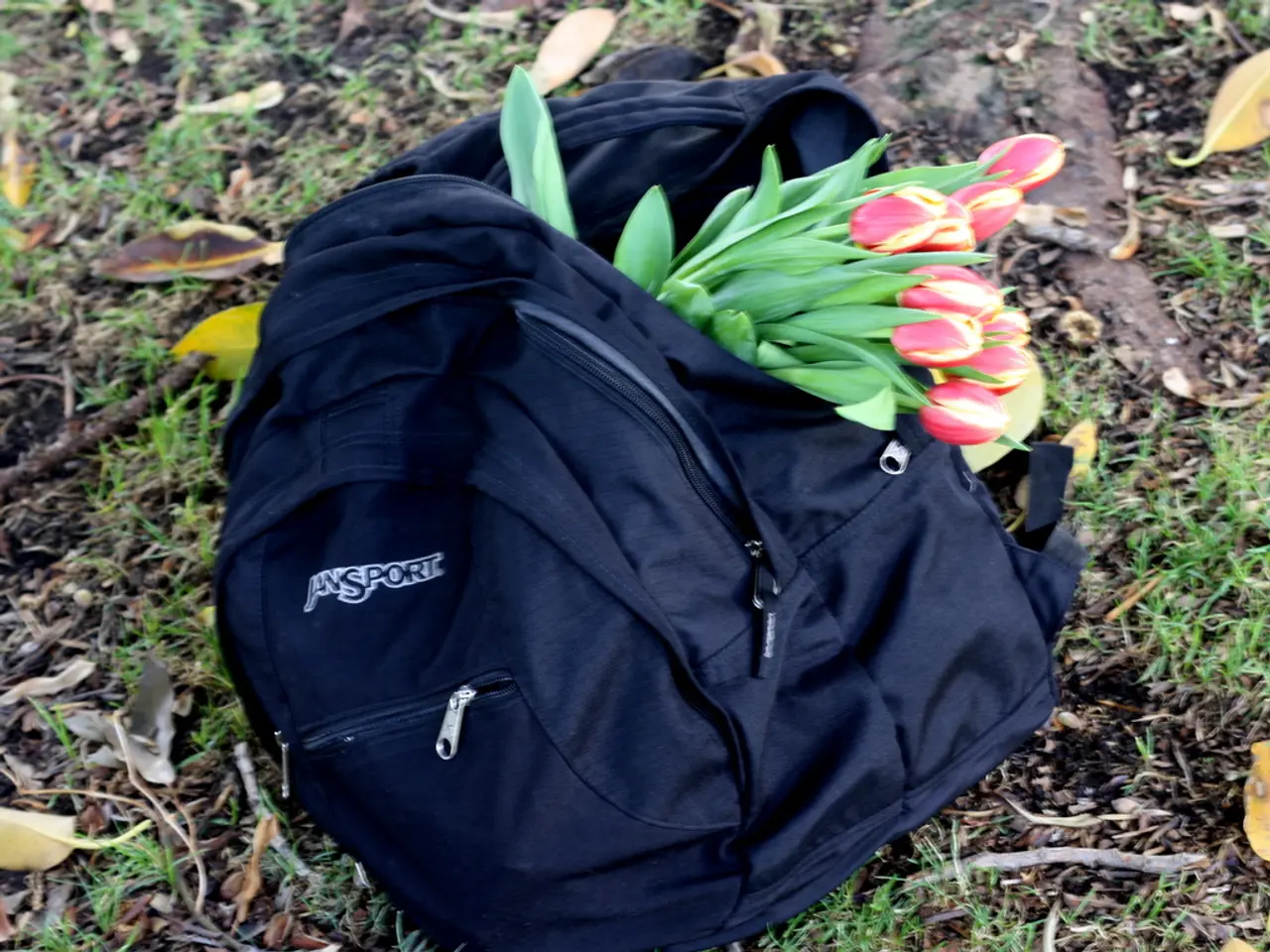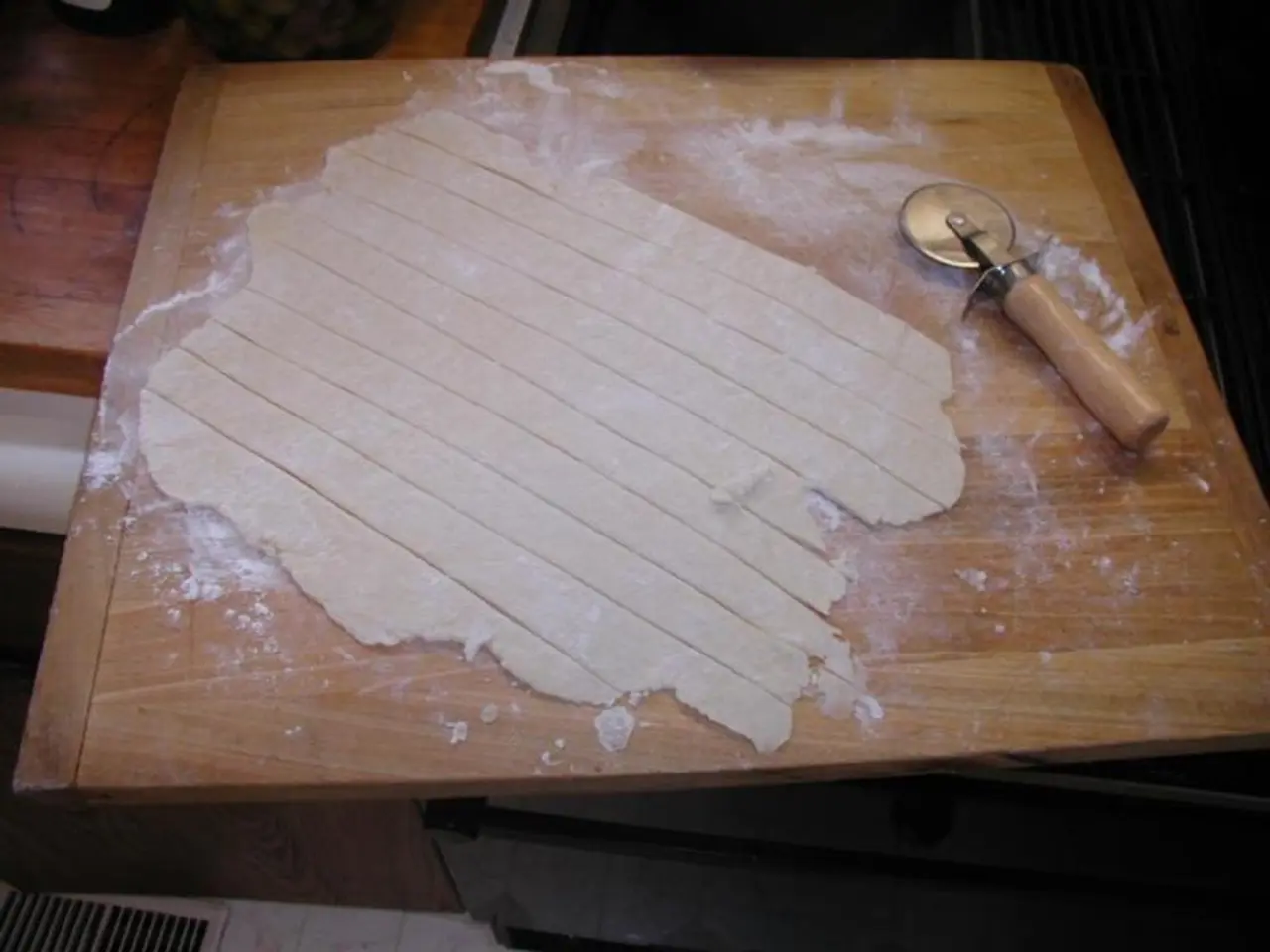Gardening Improvement through Worm Composting (Vermiculture)
Vermicomposting, or worm composting, is an eco-friendly and sustainable practice that transforms kitchen scraps and organic waste into nutrient-rich compost. This method, which utilises specific types of earthworms, primarily red wigglers (Eisenia fetida), offers a practical solution for environmentally conscious gardening practices and long-term garden health.
Setting up a Worm Bin
The first step to successful vermicomposting is choosing the right bin and location. A 5-gallon container or a two-tote system works well, as they provide good ventilation and drainage. Drill 1/4 inch holes for airflow near the top and bottom to allow ventilation and excess moisture drainage. Place the bin in a location with temperatures between 55-75°F (13-24°C).
Next, prepare the bedding. Fill the bin with 4 to 6 inches of moist bedding material like shredded cardboard, paper, or coconut coir. Maintain about a 2-inch bedding layer on top during composting. This bedding helps regulate moisture, provide air pockets, and create a habitat for the worms.
Introducing the Worms
Start with 250–500 worms for a manageable bin size. Gently place worms on top of the bedding and cover them with another layer of bedding to protect them from light and drying out.
Feeding the Worms
Add food scraps such as fruit and vegetable peels, rind, and cores. Bury them under the bedding to reduce odors and pests. Avoid meat, dairy, oils, and bones.
Maintaining Moisture Levels
The bedding should be moist but not soggy, like a wrung-out sponge. If too wet, add dry cardboard or paper to absorb moisture; if too dry, mist with water using a spray bottle. Proper moisture is crucial for worm health and composting efficiency.
Managing the Compost Layers
In multi-tray worm bins, rotate trays as the top fills; worms will migrate towards fresh food in the new tray below, leaving finished compost behind in the lower trays. Remove finished compost once worms leave the tray.
Harvesting Vermicompost
Allow worms to migrate naturally from finished compost to fresh bedding, or use techniques like stacking bins for easier harvesting without disturbing worms.
Monitoring the Worm Bin
Regularly check for proper moisture, air circulation, and worm activity. Add fresh bedding and food waste regularly but avoid overfeeding to keep the system balanced and odor-free.
Following these best practices will create a healthy environment for worms to efficiently convert organic waste into nutrient-rich vermicompost, suitable for gardening and soil enrichment. Vermicomposting is a sustainable, cost-effective, and efficient method for enriching garden soil.
Adopting a lifestyle focused on home-and-garden activities, you may find vermicomposting an exciting way to practice sustainable living. By setting up a worm bin, you can transform kitchen scraps into nutrient-rich compost for your garden. With the right bin, location, and careful management of moisture levels, you'll create an efficient and eco-friendly vermicomposting system conducive for long-term garden health and gardening practices.




